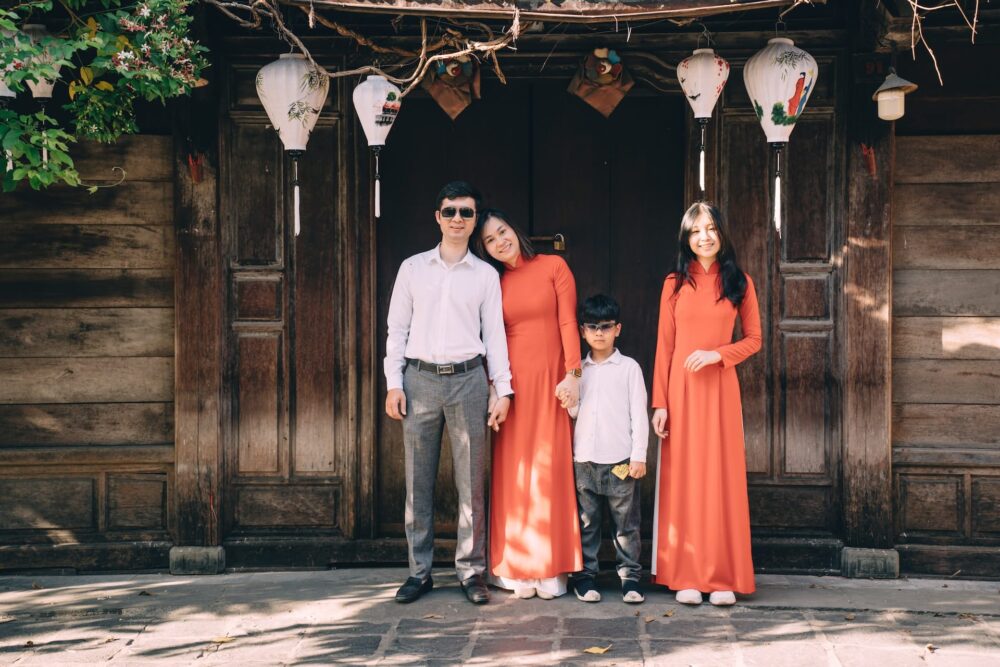
10 ESL Family Activities to Practice Vocabulary
Incorporating students’ real-world knowledge and experiences into your lessons makes the learning process more effective.
And one easy and fun way to do that is by talking about family.
Read this post for ten creative and effective ESL classroom activities using content that almost every student can relate to—their families.
Contents
- 1. Family Trees
- 2. Famous Families
- 3. Learning “Do” and “Be” Questions With Family
- 4. Describing Family Members
- 5. Family Interviews
- 6. My Family Photo Album
- 7. Family Event Role Play
- 8. Family Traditions Collage
- 9. Family Values Poster
- 10. Family Mystery Game
Download: This blog post is available as a convenient and portable PDF that you can take anywhere. Click here to get a copy. (Download)
1. Family Trees
In every ESL family lesson plan, the family tree should be your first port of call.
The perfect ESL visual aid, family trees aren’t only useful for eliciting vocabulary about family members, they can also be turned into excellent conversation exercises for helping students learn to speak naturally.
Introduce this activity by drawing your family tree on the board, clearly indicating where you are in relation to other family members.
From there, expand the diagram further, making it more complex by adding things like daughter, son, aunt and uncle, until you cover all of the basic family vocabulary.
Then ask students to draw their own family trees, either on the board or on poster board or paper. Then they can present to the class or other students.
You can also introduce the activity by playing this charming “My Family Tree” video on FluentU:
While you might think that the video is too simple for older students, at just under two minutes long, it’s an excellent way to introduce the topic.
It’ll also give you the chance to hover over certain family words to define them and add them to a flashcard deck. Students can then review the flashcards with FluentU’s quizzes, either on their own or as a class.
2. Famous Families
Choose a famous family that all of your students should be familiar with. It could be a fictional family from a TV show, a celebrity family like the Kardashians or even the British Royal Family. Just make sure that the family is a big one with lots of different family members.
Personally, I always use “The Simpsons.”
For this activity, you need to find a diagram of your chosen family’s family tree online, print it and hand it out as a worksheet. Create some comprehension questions to go with it, so your students can fill in the correct family vocabulary.
If you’re using “The Simpsons,” your questions could look something like this:
- Bart is Homer’s _____
- Homer is Marge’s _____
- Bart and Lisa are Homer’s _____
3. Learning “Do” and “Be” Questions With Family
Along with possessive adjectives, do and be questions are some of the most commonly misused grammar for ESL students. Fortunately, you can use family lessons to help your students master these types of questions.
Spend some time going over the difference between the two types of questions, giving specific examples in relation to families. Some questions you could use include:
- Where does your sister live?
- What do your parents do?
- Do you have brothers and sisters? How old are they?
- Are you married?
After that, ask your students to come up with their own questions and then interview classmates.
4. Describing Family Members
You can delve into some more detailed ways to talk about family members by discussing their looks and personalities. There are a lot of words to cover here, so start by brainstorming some vocabulary words together to get your students thinking about descriptive adjectives too.
You can do this by splitting the whiteboard down the middle, with appearance on one side and personality on the other. Give your students some markers, step aside and have them fill in as many words as they can.
Once finished, have your students make sentences about their family using the descriptive adjectives on the board, like these examples:
- My mother is short.
- My brother is shy.
- My sister has long hair.
- My father is a veterinarian.
From there, have students make questions corresponding questions for those sentences, like:“What does your mother look like?” and “What is your brother like?”
5. Family Interviews
This is a great activity from my personal experience using it in my ESL classroom. Here’s what you do:
- Divide students up into pairs, preferably pairs that have different language and cultural backgrounds.
- Ask student to interview one another about their lives, traditions and families. Students should take notes so they remember the details.
- Then ask students to to brief presentations to the class, introducing their partner’s family.
When I’ve done this, the students have really gotten to know one another better and they seemed to appreciate the diversity in the room more afterwards, which is never a bad thing.
Here’s a great example video of how these presentations can look:
6. My Family Photo Album
This is a really fun activity. It can lead to both laughing and even tears if a particular student is in a wistful or homesick mood, so be prepared with some tissues!
A couple of days before you do this activity, give a brief preview and ask students to find family photos to show the class. These days that usually means printing them out from parents’ emails or Google Photos. Another option is that they can collect photos into a folder on Google Photos and then show them on the projector.
Once the sharing activity day arrives, ask your students to go through their photos, describing them to the class.
They can include details like:
- Names and ages
- Background of the photo (what was happening when it was taken)
- Their relationship with the subjects
After each presentation, open the class for questions. You might just have a heartfelt discussion on your hands, which is always good for learning.
7. Family Event Role Play
Acting and role play is always fun, so I try to include it as much as possible. If you set the tone by acting and role playing yourself beforehand, I find the students tend to take it more seriously.
Here’s that to do:
- Put students into groups.
- Have them come up with a family-based scenario. This would be a family reunion, a wedding or a birthday party.
- Have them assign roles and then act out the skit in front of the class.
After the activity, have students critique the skits. They can focus on acting quality, grammar or vocabulary to do this.
8. Family Traditions Collage
Including art and collage making into my ESL classroom has become one of my go-to activities, especially when you sense that some students are getting a little bored with traditional activity types.
Here’s how to go about doing this activity:
- Put students in groups.
- Instruct each group to come up with a different family tradition, such as celebrating a holiday or cooking a special meal.
- Have students research and create collages, either by cutting out pictures and words from old magazines or from printing them out from the internet.
- Then have them do short presentations to the class, explaining their collages.
This activity takes about an hour, which will give you a little downtime as well, while students are having fun.
Here’s a good video on family traditions around the world to get this activity started:
9. Family Values Poster
This is another art-based activity that my students have always loved doing. You have to do a little prep work for this one. Ideally, you’d have one sheet of poster board for each group (and maybe a couple of back-ups in case one group messes theirs up), and some kind of colored markers so they can make the posters colorful.
For this one, you start the activity off by discussing family values, such as respect, honesty, working hard, saving money or even generosity.
Then you can ask students questions about their own family values to get people talking and to get used to using this group of vocabulary.
After the discussion:
- Put students in groups.
- Ask students to create posters illustrating their assigned value and present them to the class, explaining its importance and how their own family embraces it.
If you want to start off this activity with a short video about different types of families and family values, this is a great video for that:
10. Family Mystery Game
This last activity takes the concept of finding out a mystery about each students’ families.
A couple of days before the activity, ask students to bring in a small object (or photo of a small object) that represents one of their family members or one of their family’s interests.
Ask each student to do a brief show-and-tell and then allow questions, such as:
- Does this object belong to a man or a woman?
- Does this object mean a lot to the person?
- Is this related to horseback riding?
Once the object’s mystery is figured out, you can move to the next object. I’ve found students really enjoy this activity, because they get to share a bit of their personal history with their classmates.
With these fun and creative ESL family activities, you’ll be able to let students share about their families and their cultures and countries.
This personal connection always makes for effective language learning.
Download: This blog post is available as a convenient and portable PDF that you can take anywhere. Click here to get a copy. (Download)



